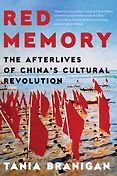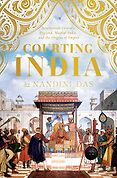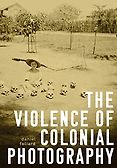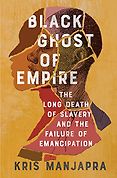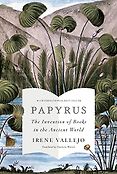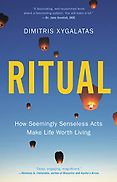Tell me what kind of books you were looking for in choosing this shortlist. Which qualities do you value for the British Academy Prize for Global Cultural Understanding?
The main criterion for this prestigious prize is the subject matter of the book. It has to deal with global cultural understanding, in the sense that it may be about a local context, but it resonates with a global theme.
The second thing is accessibility. The book has to appeal to a wider public. The research may be done by an academic or a journalist or an artist etc., but anybody with a level of literacy will enjoy it. The book should not have a narrow audience.
Another aspect the judges consider is the originality of the research. This has to do with new discoveries, new primary sources or even interviews with people. It is important for the authors to be there, either historically, in the archives, or in the present, when they can engage with their subject matter.
The jury also pays special attention to representation, in the sense that we like the prize and the shortlist to include a wide pool of authors representing multiple voices, ethnicities, regions, and identities.
So it’s a combination of different things that make the shortlisted books (and the eventual winner) special and memorable to read.
It makes for some excellent books. Let’s go through each of them in turn. The first one is Red Memory: Living, Remembering and Forgetting China’s Cultural Revolution by the Guardian journalist Tanya Branigan. She writes, “it is impossible to understand China today without understanding the Cultural Revolution.” Tell me more.
China, as a country, remains a mystery to many people around the globe. But there is a moment in Chinese modern history that is intriguing—this is the Cultural Revolution. Those of us who follow what’s going on in the world, and specifically in Asia, were astonished by this twentieth-century experiment in social political engineering, as the Chinese leadership tried to erase the consciousness of people and replace it with another set of ideas. It was unprecedented, perhaps, in its magnitude and the people it affected.
Red Memory tackles this moment through the words and voices of the survivors of this era. We had no idea how it impacted normal people doing their jobs, going to the market, and educating their children. It is about the horrific moment of engineering society and changing its consciousness.
What really intrigued me is that this is supposed to be a Cultural Revolution, but the author shows how deeply horrific it was at every level of society: at the level of the Communist political party, the schools, the farms, the markets, the youth clubs. The author captures the voices of those survivors.
What is most interesting—and this relates to your quotation—is that the book allows us to understand contemporary China. This is a China that has moved from communitarian life to individualistic capitalism and consumerism in the 21st century. Branigan explains to us what had happened and how this Cultural Revolution, in its focus on community, the nation and the political party, came to a disaster, precipitated a famine, and was built on excessive violence and torture.
Basically, the book explains to us how China moved from Mao to market, from community to individualism, and from famine—triggered by the Cultural Revolution—to excessive consumerism. The book is accessible, and sheds light on that dark moment in Chinese history that continues to influence the way China and Chinese society perceive themselves in the 21st century.
Let’s go on to the next book, Courting India: England, Mughal India and the Origins of Empire, by Nandini Das. This is about England’s first diplomatic mission to India under James I.
This is an excellent book with extraordinary historical depth. It focuses on the moment when Britain encountered the Mughal court in northern India, through the journey of the British envoy Thomas Rowe. He left Stuart Britain, which was chaotic and in conflict about its own identity. I would say that Das shows us how impoverished Britain was in contrast with Mughal India. Rowe arrives in India and Das follows his journey on a boat—a difficult and hazardous trip at the time. He then moves on land to reach the amazing Mughal court where successive Mughal emperors lived.
The book captures all the interesting literature, letters and memoirs that were produced at the time. Das has great command of that literature, in addition to the primary sources and the archival sources that document that journey. What is also fascinating is that she consults the records of the East India Company, which was the main actor on the Indian subcontinent before the British government went in. We see how trade came first, then politics and Empire second.
What fascinated me about this book is how it helps a greater global cultural understanding, because we see the Indians through the eyes of the administrators of the British East India Company and of Thomas Rowe. It’s amazing how they documented every minute of their journey. But, also, we see Britain through the eyes of the personalities of the Mughal court.
Das has access to vast literature. She has this ability to extract from the primary sources very interesting data that tell us about how India was perceived. She also explores prejudices and racism. The prospect of wealth—gold and trade—were the primary push factors that triggered the penetration of the Indian subcontinent. The East India Company was joined by other trading nations, the French, the Dutch, etc. to appropriate this wealth.
At the same time, we see Britain through the eyes of the Mughal emperors, their viziers and entourage. In the book, we have these two worlds, the ambassador and the staff of the East India Company, and the Mughal court coming together with mutual admiration, despisal, and contempt. We have all the human emotions that one could have, in this particular encounter.
It wasn’t bad from Day One. There was repression and oppression, but the encounter between Britain and India was more complex than that. There is friendship and contempt; there is love and hate. Das does a good job of explaining how these first encounters in overseas territories between local emperors and the British unfolded. In the case of the Mughal emperor, we’re not talking about a little chieftain; we’re talking about a sophisticated, wealthy, and cultured Mughal Empire, at a time when Britain was lagging behind.
The book is a valuable contribution to historical research, and, more importantly for the purpose of the prize, it fosters global cultural understanding between two nations and their representatives.
The third book is The Violence of Colonial Photography by Daniel Foliard. This was originally written in French and translated by Saskia Brown and the author himself. What is it about?
The subject matter of this important book is the image. It’s about photography, the invention of the camera, and where the camera went initially, towards the end of the 19th century and the beginning of the 20th century. The author captures that moment whereby travellers—whether they were colonial administrators, journalists, voyeurs or anybody who could get hold of a camera—and what they did in the context of a colonial situation.
It is not about photography in general; it’s about photography in the specific context of the colonial encounter between colonial powers—their military, officers, soldiers, travellers, and journalists—and local communities in the process of being colonised, possibly terrorised, repressed, mutilated, and killed. There are horrific images that were reproduced. The book delves in greater detail into how these images were circulating towards the end of the 19th century and the beginning of the 20th century in the metropolis, in the centres where colonialism was at its height, mainly in Britain and France.
The author shows awareness of the debates about photography. For example, he relies on the work of important writers such as Susan Sontag, who theorises the image and photography. He also looks at the ethical dilemmas for him as a writer and for anybody reproducing images that are horrific. We are used to seeing, on our television screens, a warning that some of the images might be violent, and we have put in place certain criteria for reproducing images of mutilated bodies or horrific scenes of death and destruction. But at the time of these early photographs, such restrictions were not in place and a lot of horrific images were circulated. In fact, some of them became postcards. It is very troubling.
Foliard asks the question: even in studying this photography, as researchers, do we have the right to circulate them? Do we make them more popular and circulate them to wider audiences, or study them without reproducing them? I don’t want to tell the reader what the answers are. They will have to read the book to discover how these ethical dilemmas unfold in any research on photography and the circulation of images of cruelty and violence.
There is one argument that says we can reproduce if there is an ultimate good reason. We all remember the famous image during the Vietnam War of that girl (Kim Phúc) against the horrific background of the war and how that image drew attention to the atrocities of war.
But there are also images that move towards the pornography of violence. Do we have an ethical carte blanche to reproduce them? This book deals with these issues, at this particular historical moment when the encounter between the colonising powers Britain and France collided with the sensibilities of the native population, and the documentation of the violence that took place during years of colonial rule.
Does he look at how the French and the British publics responded? Weren’t they horrified?
It’s very difficult to capture public opinion at the time. From his book, we know that the images did circulate. He reproduces one of these images on the cover. He opted to reproduce the images, which are in black and white, and you can see them throughout the book. He justifies that by looking at the debate and explaining why he made that decision.
Let’s go on to Black Ghost of Empire: The Long Death of Slavery and the Failure of Emancipation by Kris Manjapra. This is also quite shocking. Tell me more about this book.
Black Ghost of Empire is an excellent book that deals with 500 years of Atlantic slavery and the unfinished and brutal business of the so-called emancipation.
In the public discourse and the historical record of, let’s say, Britain, we pride ourselves on the fact that we were the first nations to abolish slavery. Kris Manjapra looks at this narrative of the liberal British Empire and the benevolence of its administrators and leaders, who imposed abolition in their colonies first, and then policed the oceans to stop slavery, especially from Africa to the Caribbean and South America, etc.
Manjapra looks at historical evidence in many locations to show that this myth of emancipation has prolonged slavery. It has replaced the old slavery with a new kind of slavery, although it wasn’t called slavery after abolition. He invokes a powerful symbol, that of the void, mainly that after slavery was abolished, there was nothing to worry about; it was all fine.
He also assesses the significance of the reparations—the millions of pounds that went from the British taxpayer to the slave owners in Britain and the colonies. I was shocked to learn that the financial bond that the British government had put in place at the time was fully paid only in 2015!
The author combines his academic knowledge with activism, and this is another significant dimension of this book. He is calling, in a subtle way, for reparations to the nations who had suffered as a result of slavery—not only slavery in its classical form, but also slavery in other, later forms.
He explains why the abolitionist movement started in Britain. Is it because people were good, and they had a moment of awakening? Or are there any other reasons behind this drive to abolish slavery? He looks at the flourishing of new ideas of capitalism related to mining in different parts of the world, for example, in Australia, towards the end of the 19th century, and in South Africa, whereby the plantations of the Caribbean became second in importance to the gold and diamond mining that was promised in other territories. In order to move labour, which was slave labour, from the plantations to other parts of the world, slavery was abolished and replaced by indentured labour.
New towns were created in Africa, for example, in Liberia and Sierra Leone. Freetown, in that part of the world, was founded for slaves who were caught by the British abolitionist ships in order to be freed. In fact, freed slaves were shipped to Freetown and put in camps where they were forced to do slavery-type work. He looks at these networks and connections dating back to the 18th century that created yet another form of slavery.
The author looks at the Black diaspora of the time. We are not here in front of a passive victim or victimhood on the part of the Black population that was transported and settled in places such as North America, the Caribbean, and South America. He looks at their networks, and the conferences they organised. Freed slaves in the United States held conferences in London to bring the Black diaspora together and deal with the aftermath of abolition.
I think this book is extremely relevant to understanding Black activism, abolitionists’ ideology, and what replaced it. The conclusion of the book invites us to rethink this idea of a benevolent British intervention to abolish slavery at a time when, probably, people thought that it was goodwill and moral imperative that drove the abolitionist movement in Britain.
Let’s go on to Papyrus: The Invention of Books in the Ancient World, by Irene Vallejo. This was written in Spanish and translated into English by Charlotte Whittle.
Irene Vallejo is a classicist and a novelist. She combines academic research and creative writing to produce a highly accessible book about the ancient world. The book deals with how, in the Mediterranean region, books were produced, cherished, read, burnt, and destroyed. Books are part of our lives now, but we can’t take them for granted. The book explores the history of libraries, specifically the famous library in Alexandria. In a nutshell, Vallejo explores how the ancient world invented tablets, papyrus, and later books. We learn about how Athens and Rome wrote and preserved the word.
It is basically a book about words and the survival of words in the form of books. There are oral traditions that survive until the present day, but human society, in general, wanted to document words in something durable, which has a lifespan longer than the lifespan of an individual, or even multiple generations.
It is both a history and a sociology of knowledge. It is highly accessible, especially to non-specialists, and it’s a joy to read. It’s full of stories. Its starting point is the famous Library of Alexandria. The author combines her knowledge of Greek and Roman sources with sources in Egypt at the time, which later became Arabic.
The book is full of intriguing stories about why human civilisation invented the alphabet; how people documented their lives; what kind of human imagination went into writing by Homer, including the Odyssey. There is a plethora of sources. It is astonishing that one author can combine all this knowledge in a very thick and enjoyable book.
This book includes a personal dimension. Vallejo moves from an eight-year-old girl, going to bed, with her mother reading her books and novels and stories, to the academic who writes about libraries and books.
Books come with challenges. There’s the challenge of making them: which material do you use? They also come with the challenge of ink: is it going to last? They come with the challenge of preservation: what temperature is good to keep them dry? They come with serious political issues. Censorship is the by-product of believing that books are dangerous as they might contain subversive ideas and thoughts.
Also, there is book burning. Vallejo looks at how, in the ancient world, some books were burned simply because they were deemed dangerous. Some books were provocative, and political authorities didn’t like them. Religious groups may not appreciate their message, so they were censored or, in some cases, burned. Vallejo reaches an interesting conclusion about burning books. Any country or nation that engages in burning books, regardless of how provocative it is, is probably on the path to self-destruction.
This is a message that resonates in the contemporary world, especially when some groups, whether they’re right-wing or left-wing, engage in book burning rituals in public squares or organise events to burn sacred religious books. For example, in some of the Scandinavian countries recently, right-wing groups have gotten together in public squares and burned the Qu’ran. Such acts of symbolic violence had a long history in the ancient world.
Vallejo has a very important message for all of us in the modern world, where extreme opinions and positions have become acceptable in a post-liberal age, and where book burning becomes extremely common, not in countries where you’d expect it to be, but in liberal democracies!
Vallejo’s book fosters global cultural understanding by allowing us the opportunity to be aware of some dangers associated with the written word. Hence its importance as a book that is highly accessible about an important history of human civilisation. Although its focus is on the Mediterranean region, the ideas resonate around the globe today.
I started reading it this morning and it was like a novel, with people going out on horseback to find books for the Library of Alexandria.
The way the Library of Alexandria accumulated so many books is incredible, given the limitations of transport in ancient times.
Also, the book draws our attention to the community of intellectuals. We call them intellectuals, but they could be called sages, writers, learned individuals, theologians, philosophers, and literary people. The cosmopolitan cities around the Mediterranean Sea are incredible, in the sense that people came together from different religions—there were Jews, Christians, pagans and later on Muslims—and they all lived together to copy books or to debate them.
There were study circles, where there was a kind of freedom of thought to be able to engage in these important conversations about books. Vallejo gives us a full picture of an intellectual world to which, unfortunately, we have no access, in the sense that the Library of Alexandria was burned. She looks at the debate about how it happened and concludes that there is no answer as to why it disappeared.
The last book on the 2023 shortlist is Ritual: How Seemingly Senseless Acts Make Life Worth Living, by Dimitris Xygalatas. Please tell me about that one.
This book about rituals is close to my field. As an anthropologist, I used to teach a course on the anthropology of religion, and ritual is an important part of studying religion. In fact, to academics of the 19th century, such as Émile Durkheim, we can only access religion as a field of study through observing ritual.
Ritual, by its own nature, is a condensed event where there is high symbolism. Somebody watching a ritual that he or she is not familiar with might see some acts that look ‘bizarre’. But once you start doing field work and looking at these ‘bizarre’ acts, you begin to understand the meaning of symbols and then, at another level, of the religion itself.
Xygalatas explains to us, in a very accessible way, the significance of rituals. We are yet to find a human society that doesn’t have rituals. We all have them. We, in the West, might think that we have abandoned rituals. We don’t do that kind of thing anymore. We don’t walk on fire. We don’t organise events where people put swords or metal objects through their bodies. But we still retain some aspects of ritualistic behaviour.
Xygalatas looks at rituals in a new way. In anthropology and sociology, there is a whole body of solid scholarship on ritual. The novelty of this book is that the author combines this classical literature with neuroscience. It might appear a bit farfetched, but he successfully explains to us what rituals do to our brain, and our human psychology.
What ritual does to us explains its persistence and why we do it year after year, season after season, and at particular moments in our lives, such as those rituals associated with life cycles: marriage, birth, death, and so on. Xygalatas looks at the emerging field of the study of ritual combined with neuroscience, to allow us to understand the universality of rituals and why human societies continue to engage in organising rituals.
It’s very interesting how he uses his personal story, as someone with Greek origins who is fascinated by what people in a Greek village do. He travels from Greece to Spain and other parts of the world. You can feel that he was there, observing the rituals he studies, specifically the ones that we might feel uncomfortable about, such as walking on fire. Why would people organise a ritual, annually, to walk on fire? Some people would volunteer to carry their grandmother or grandfather on their back during the ritual. It may appear a bit exotic, but far from exoticising the people the author studies, we find that he humanises them and makes them legible to us, the outsiders.
What is so important about this book is that it has that global character. It is very unusual for anthropologists to move from one field site to a second one, and a third one, because that kind of research is very time-consuming and difficult, but Xygalatas does exactly that. He practices what we call multi-sited ethnography—that is, doing research in multiple locations—and also relies on reading secondary literature about faraway places that he has not visited or done in-depth research in, such as for example in India.
Interview by Sophie Roell, Editor
October 17, 2023. Updated: June 28, 2025
Five Books aims to keep its book recommendations and interviews up to date. If you are the interviewee and would like to update your choice of books (or even just what you say about them) please email us at [email protected]
Five Books interviews are expensive to produce. If you've enjoyed this interview, please support us by donating a small amount.
